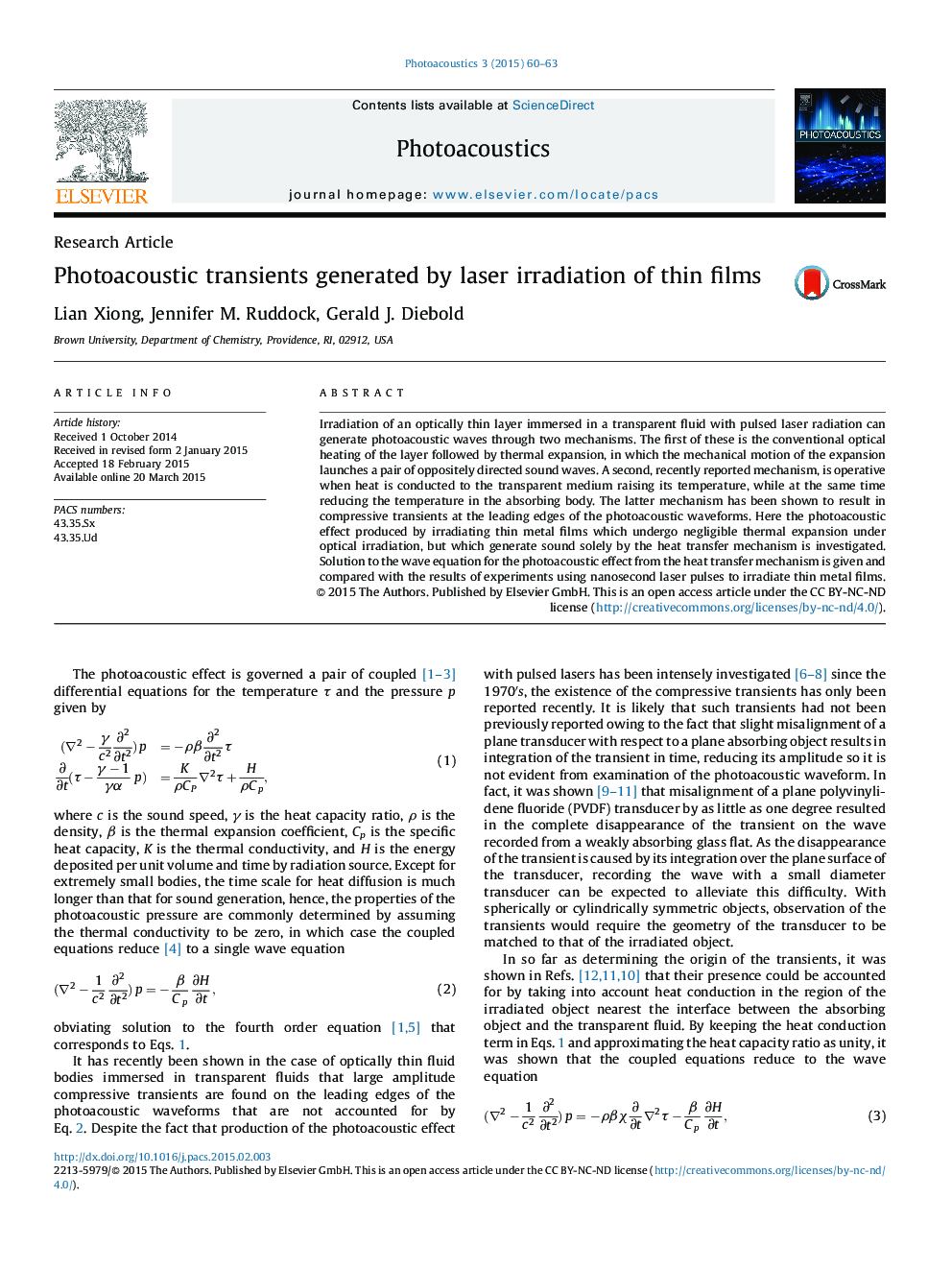| Article ID | Journal | Published Year | Pages | File Type |
|---|---|---|---|---|
| 563262 | Photoacoustics | 2015 | 4 Pages |
Irradiation of an optically thin layer immersed in a transparent fluid with pulsed laser radiation can generate photoacoustic waves through two mechanisms. The first of these is the conventional optical heating of the layer followed by thermal expansion, in which the mechanical motion of the expansion launches a pair of oppositely directed sound waves. A second, recently reported mechanism, is operative when heat is conducted to the transparent medium raising its temperature, while at the same time reducing the temperature in the absorbing body. The latter mechanism has been shown to result in compressive transients at the leading edges of the photoacoustic waveforms. Here the photoacoustic effect produced by irradiating thin metal films which undergo negligible thermal expansion under optical irradiation, but which generate sound solely by the heat transfer mechanism is investigated. Solution to the wave equation for the photoacoustic effect from the heat transfer mechanism is given and compared with the results of experiments using nanosecond laser pulses to irradiate thin metal films.
